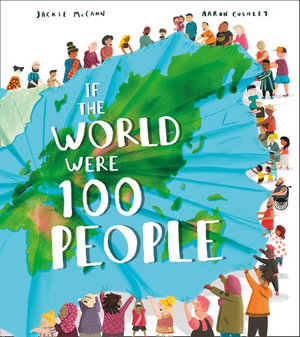If the World Were 100 People by Jackie McCann. Illus. by Aaron Cushley

Over time there have been a number of books that reduce the world's population to 100 people so that little ones can understand how things compare.
Imagining a number like 8 billion is tricky but reducing it to a village where 100 people live - each person representing around 80 million people in the real world and then exploring the similarities and differences through specific questions makes it easier to understand. Are they all grown-ups? Are there more males or females? How many have black hair or blue eyes? What languages do they speak? Who can read and write? How many have access to the internet or have enough food to eat? Does everyone have access to electricity or clean water?
Using double-page spreads, clever illustrations and graphic design elements, the global village is reduced to manageable proportions making it easier to see the things we have in common, and the things that make us different. There is also a challenge to consider the world in 2050 when they will be the decision-makers and how they can contribute to making the world more equitable.
But as well as the social and humanitarian aspects of the book, it is also an excellent way to talk about data collection, interpretation and presentation, offering the perfect pathway into learning about the various types of graphs, their purposes and formats. Students could also survey their class to see how it compares to the village by calculating the class number as a percentage of the 100 villagers, asking the questions and comparing the numbers. A purposeful and meaningful way to bring real life into their maths lessons.
A valuable addition to any teacher's toolbox and a fascinating examination for any child interested in their world and its statistics.
Themes: Population, Social problems, Statistics, Mathematics.
Barbara Braxton